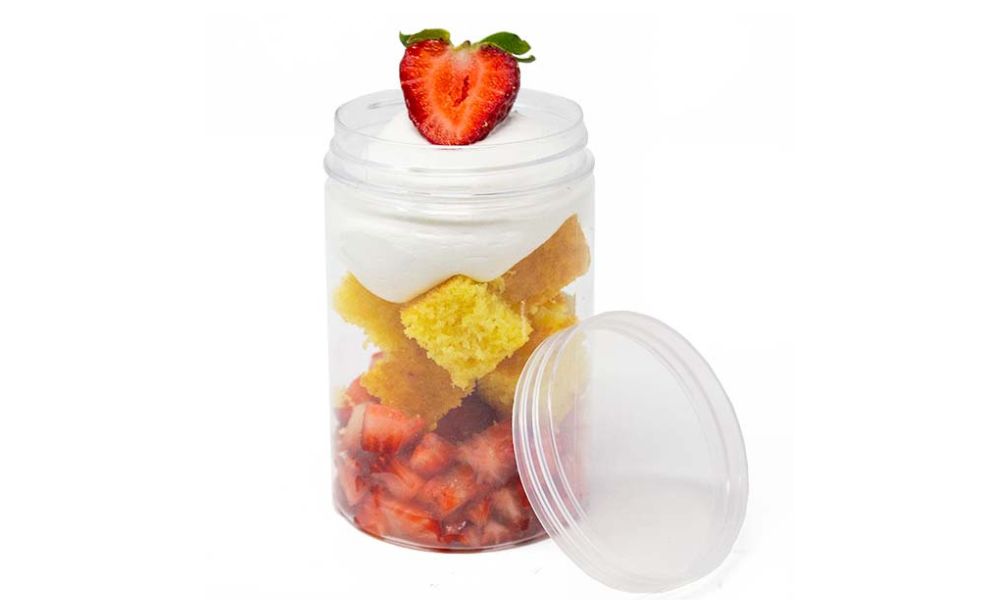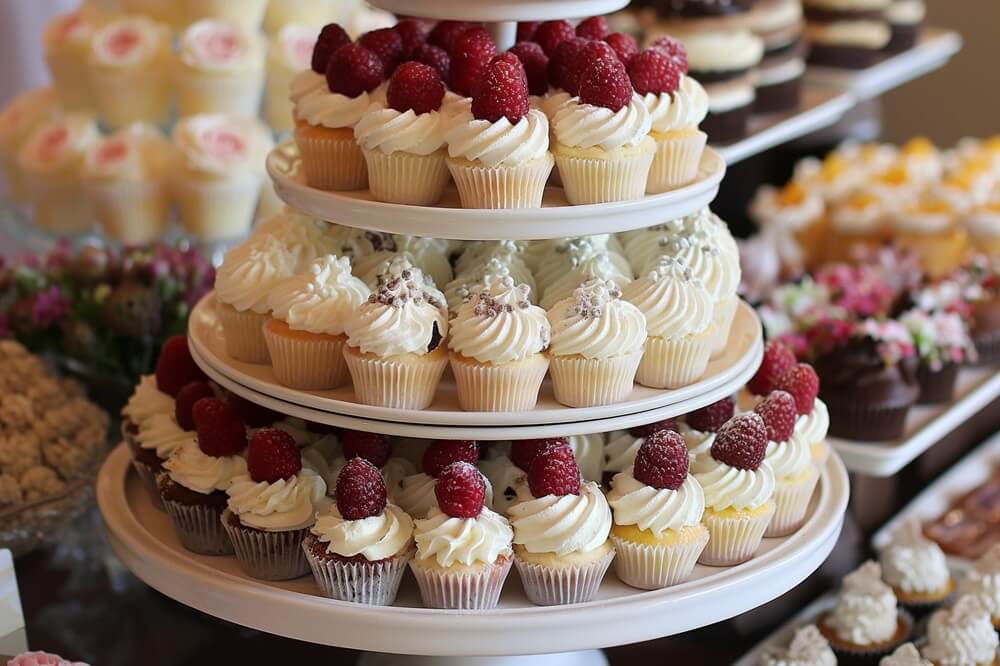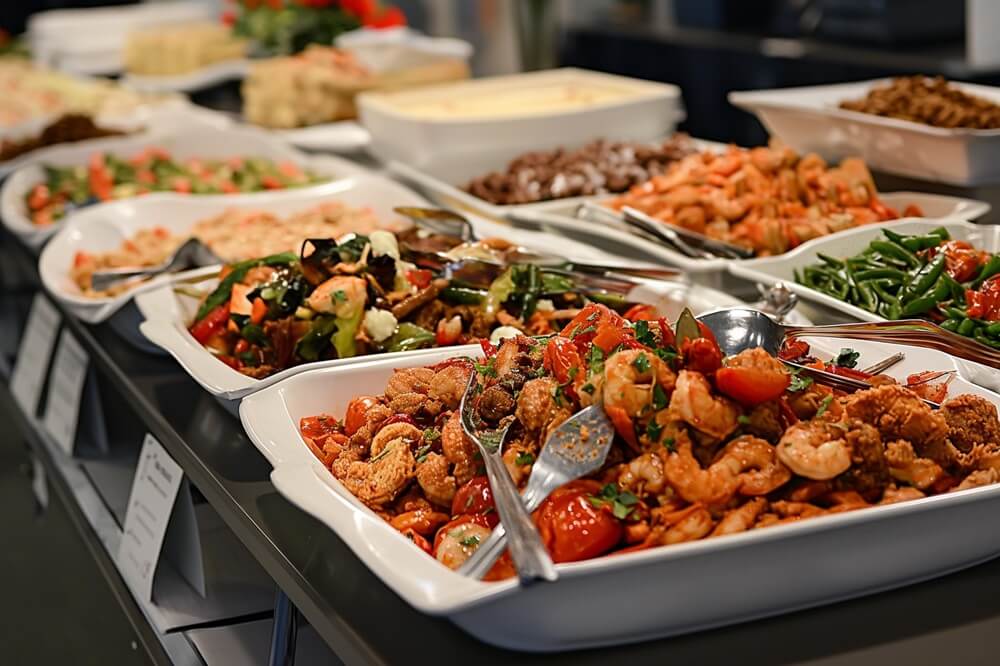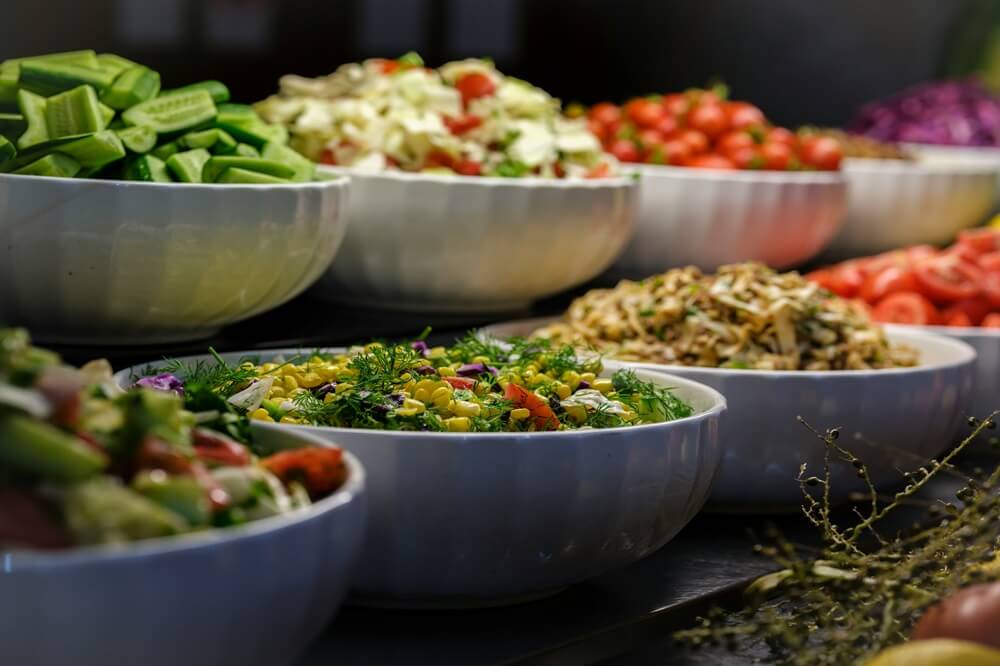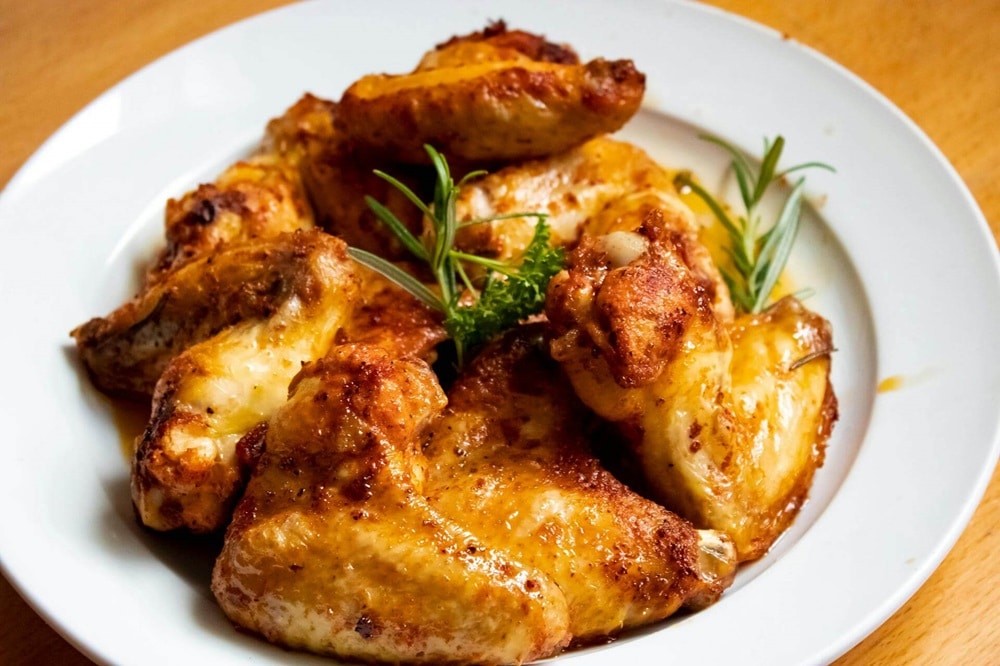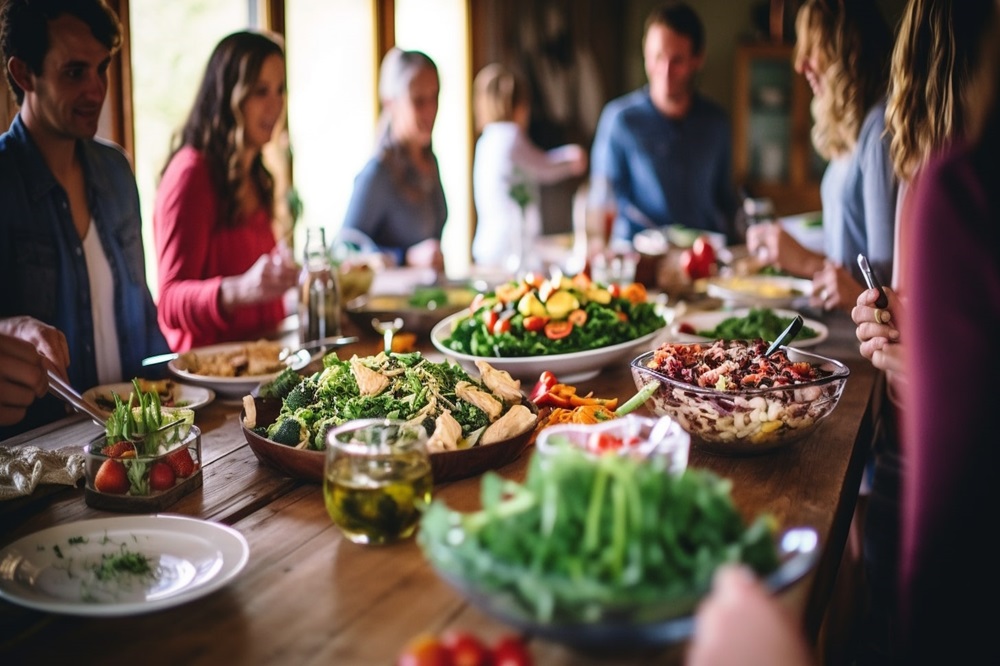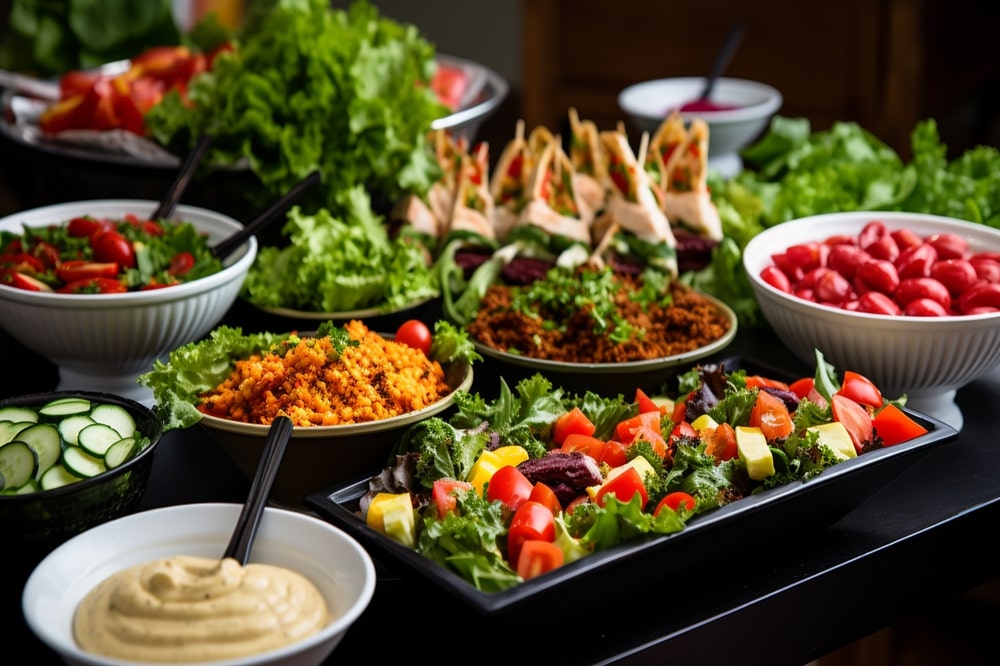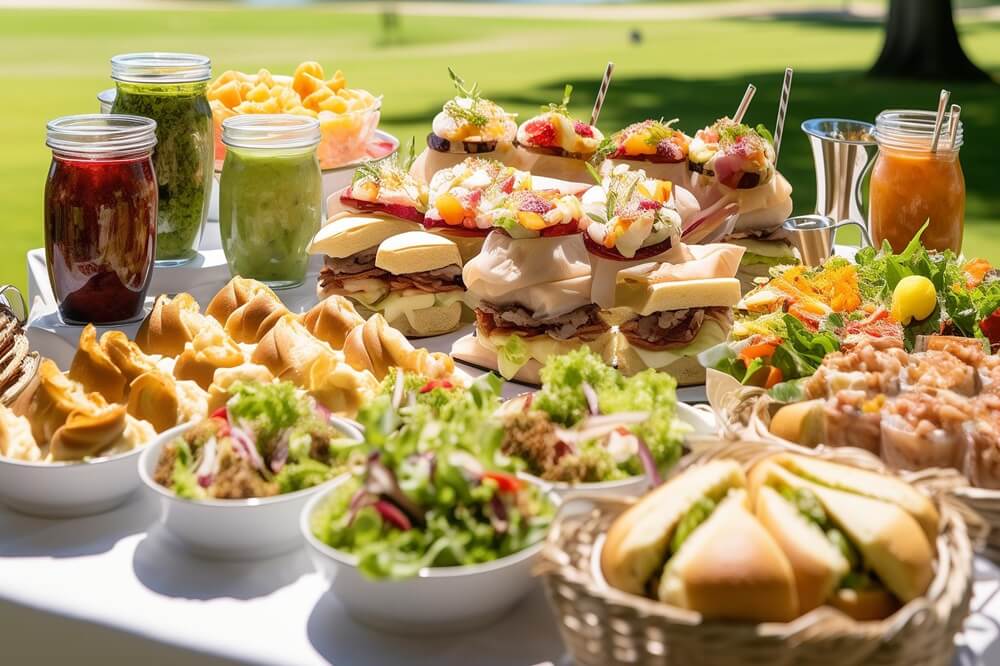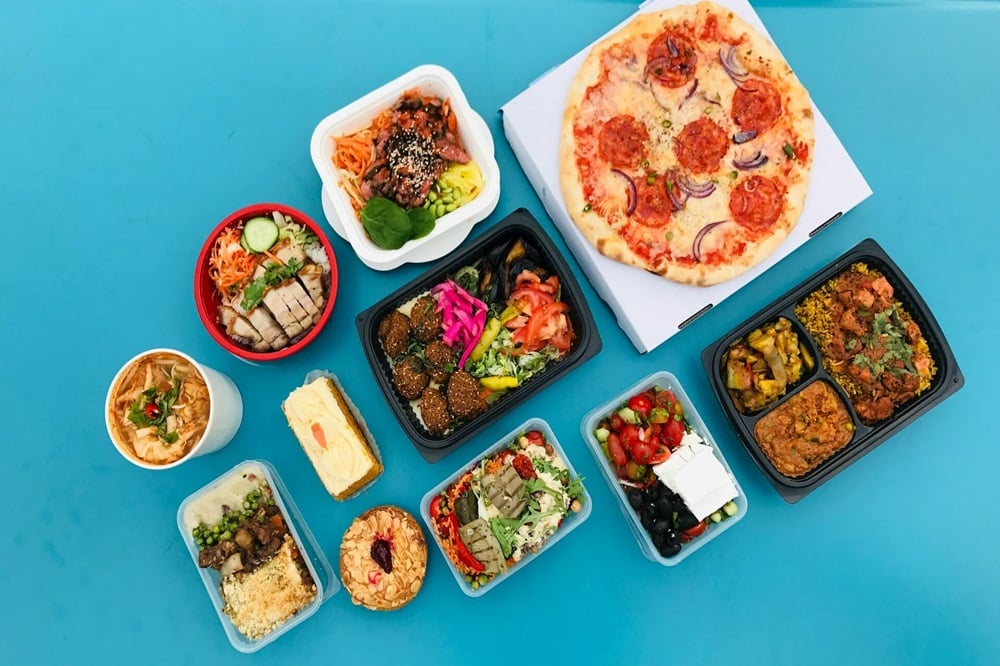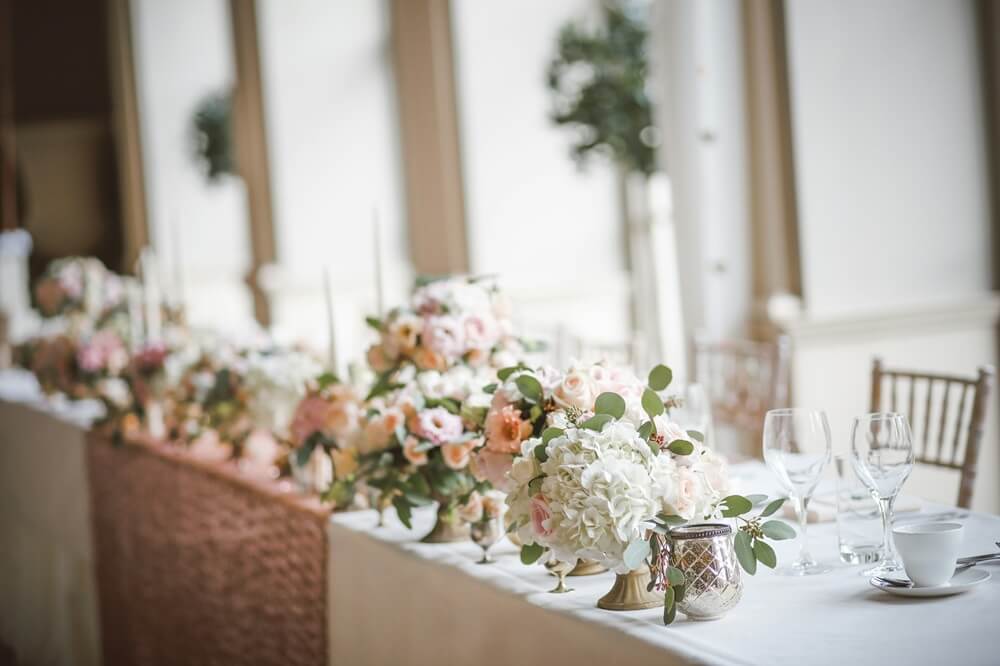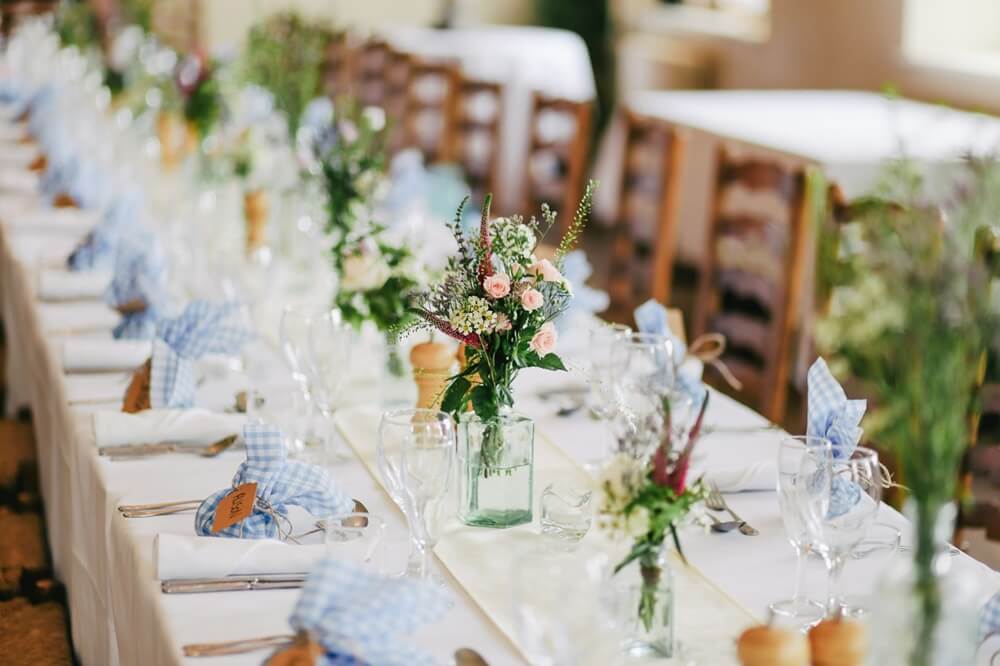A huge factor that catering companies need to consider when planning for events is calculating the food quantities per person they will need to serve. This practice is essential because it will help eliminate the amount of waste you produce and ensure you make enough food for your client. Follow our basic guidelines below to have an easier time figuring out precisely everything you need to have a successful party.
Table of Contents
Acquire the Number of Guests Attending
When you are wondering how to calculate food for a party, the most obvious answer is to get an accurate head count for an event.
The best way to maneuver through this task is to ask your client to send out an RSVP to guests. Give guests a deadline to respond to the RSVP to allow you enough time to plan the menu and make any changes before the catered event happens.
If your client is not sending out RSVPs, ask them to give you a ballpark estimate on how many guests they invited and how many will physically attend. You always want to work off a guest count as precisely as possible to ensure you have the right amount of food and beverage.
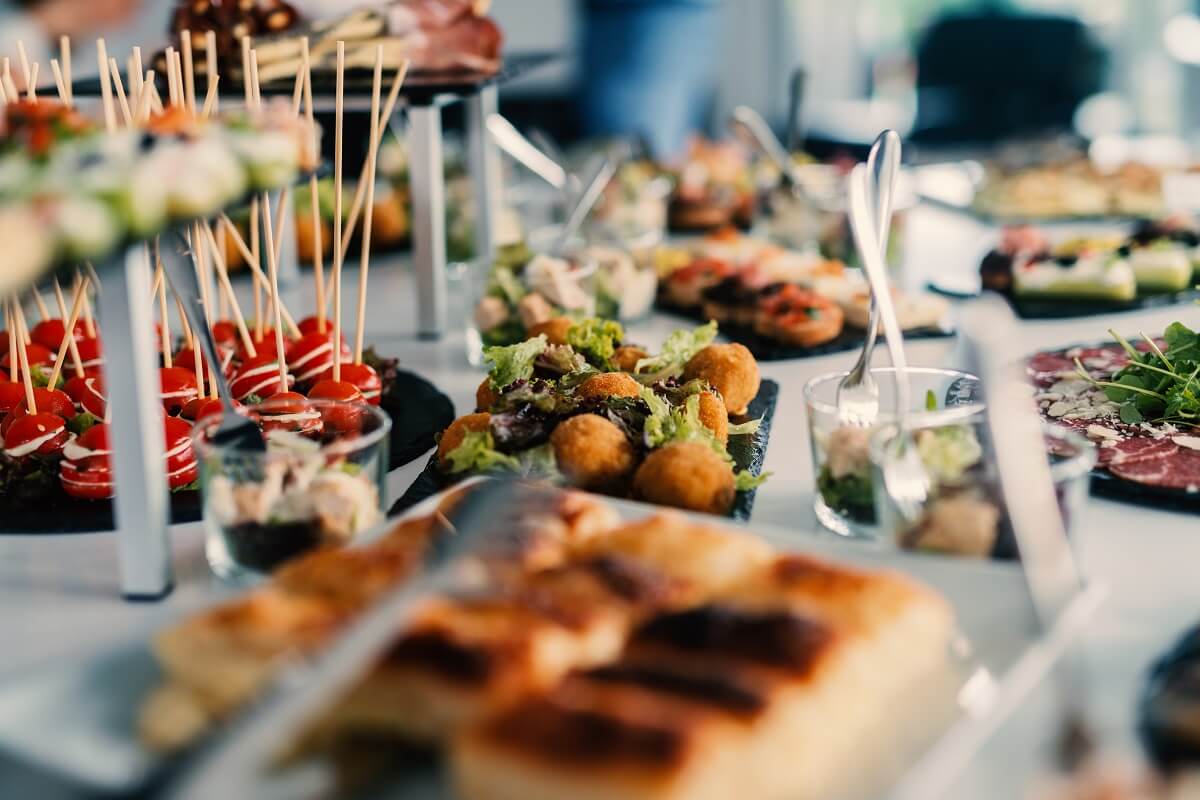
Decide What Type of Meal To Serve
There are multiple options in which you would serve the food at the event. Does your guest want just appetizers instead of main dishes, or both? Will you have a cocktail hour along with desserts at the end?
When you meet with your client, ask them what they would like their catering service to entail. The type of meal you serve them will definitely impact your calculations of the catering quantities per person.
If the event is only doing snacks and appetizers with no main courses, you can be more lenient on portions, but if there will be a full meal, that requires more calculations to ensure you have the correct food quantities per person.
Diversify the Menu to Accommodate Multiple Guests
Not every guest will be the same, and neither will their food preferences. On top of preference, many attendees might have food allergies or dietary requirements. Ask the client for a list of these types of things so you can prepare enough food options and please every guest.
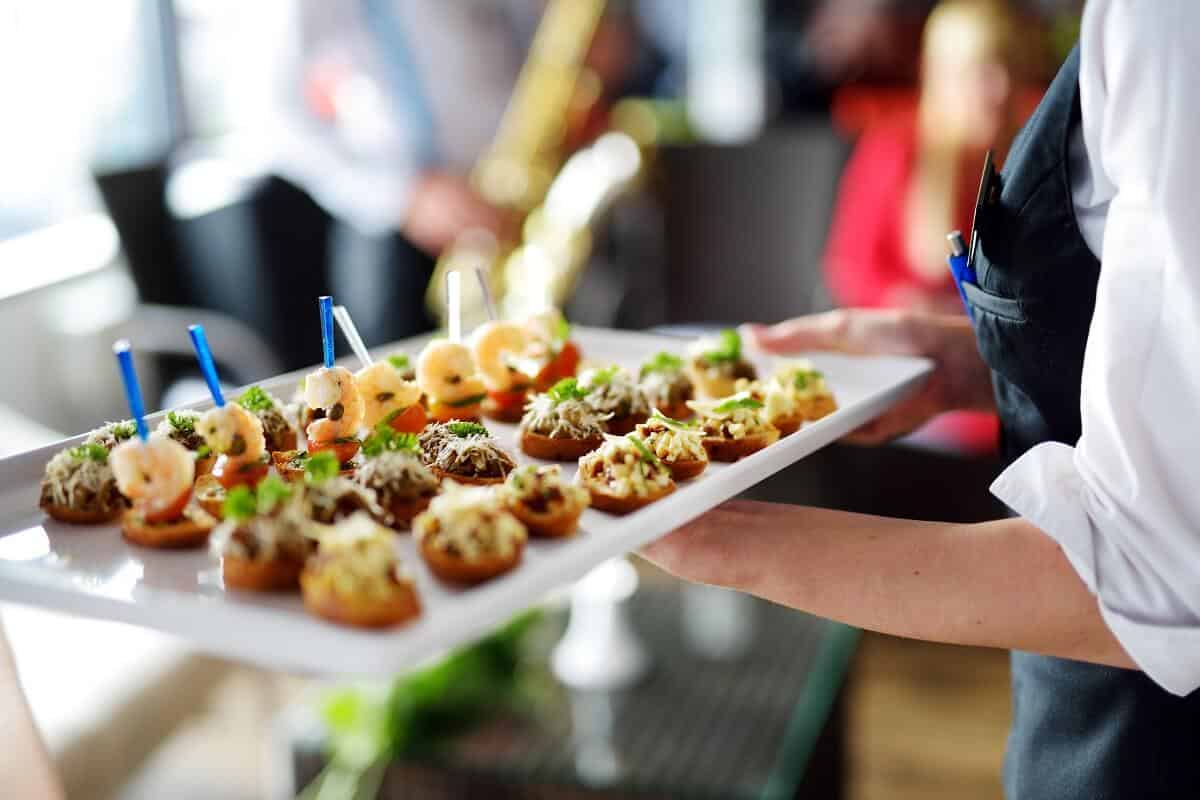
Additionally, will your customer like extra food portions of a specific item? Try to have a menu where guests get the option to choose what they want to eat, instead of one item that not everyone will be able to enjoy. It will both help you to do the right catering portions calculations and make the people attending an event happier with the menu.
Identify the Cuisine
The type of cuisine chosen for an event can also have an effect on how to calculate food portions for catering services.
For example, vegetarian food is not as filling as meat, so to make sure every guest gets a sufficient amount, you need to prepare a greater volume. With that in mind, a salad at an all-vegetarian dinner should be bigger than a regular one (recommended portion size: five to six ounces per person).
For cuisines with heavier dishes, like Italian or Mexican, you may not need as many side dishes for the guests as such food will probably fill them up faster.
In any case, it is essential to make sure every guest has enough food. First, begin with one entree and then add side dish options if necessary. Think carefully about what would go well with the main dish and how you can make it more filling.
For instance, if you’re going to serve a burrito, you may add chips with a choice of suitable dips, and pulled pork will taste excellent with coleslaw and cornbread and can be followed by a nice dessert.
Factor in Time
Will you be catering for an event during mealtime, or will it be between breakfast, lunch, or dinner? Depending on when the meal is taking place will also determine the catering quantity per person. Generally, if there is no main meal, guests will eat more finger foods.
When there is no mealtime to plan, there is less pressure to get the serving sizes right. If it is only an appetizer or dessert party, bite-size or snack-sized food portions work wonderfully for estimating amounts. The best way to plan for an event with minimal food portions is to serve guests something simple and easy. Consider utilizing CMJJ’s wholesale plastic mason jars.
Plan Around a Budget
One of the essential components that will restrict how much food and what you serve exactly is the budget. During the first meeting with your client, ask about their budget for the occasion. The amount and type of food you serve will rely heavily on the budget.
Never begin planning precisely what you will be preparing until you can estimate how much money you can spend. Look for ways to minimize the budget or purchase less expensive foods to meet the budget requirements. The funds will also determine if guests will be allowed to return for seconds after having their first serving, helping you figure out how to calculate catering quantities per person properly.
How Do You Calculate Catering Per Person in Accordance With Servings?
Finally, the catering quantities per person for each type of food you are serving will depend on the time of day you serve the dish and how you plan on serving it.
Appetizers
Usually, if you plan on serving appetizers before a larger meal, each person will receive 2-3 servings per hour before dinner. Because you will be serving a larger dish later on, the appetizer is to hold the attendees over until they can eat the main dish.
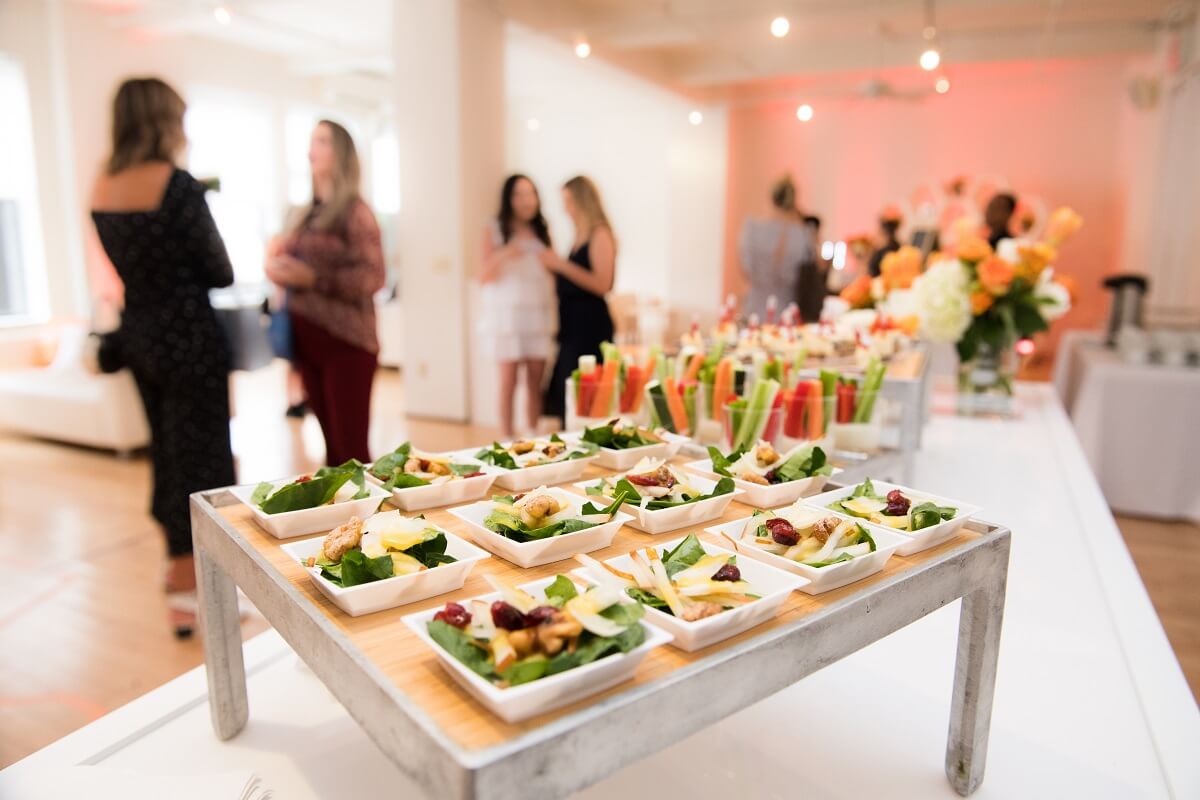
If your client only wishes to serve appetizers at a cocktail party or similar event, the serving sizes increase. If there is no main course, each guest will most likely eat 8-10 small or bite-sized appetizers. The reason for calculating food portions this way is that guests are most likely to eat more, knowing they will not be fed again later.
Sit-Down Meal
It might be easier for the client to choose a sit-down dinner with pre-selected options where guests can pick and choose which main course they would like to eat at events like weddings. Each guest will allow one portion per food item in a meal like this. The main component of the meal—the protein—will be slightly larger than the rest of the portions.
With this type of meal, it will be easier for you to know how to calculate how much food is necessary for a party because each attendee will only have one plate that night. This allows you to make precisely the right amount of food you need. General guidelines are as follows; 8 oz. of meat, 2 oz. of veggies, 4 oz. of potatoes, 1 oz. of rice, 20 tbsp. of soup, and 1 oz. of cheese.
Buffet
A buffet tells a different story on how to calculate food portions for catering because guests are free to walk back up and get more servings. This will require you to overestimate how much food you need for the event. Guests will serve themselves, and their portions may not equal exactly what you would have served them had it been a sit-down meal.
The rule of thumb for buffets is to estimate that every guest will eat 1-2 servings of each item on the table. Your catering company will need to calculate for larger food quantities. Take the number of guests times the number of servings you plan on having available; this gives you a general idea of how much food you’ll need to prepare.
Dessert
Each guest will typically have one dessert per person if a meal is given at the party. However, some events are solely desserts. Therefore, 4-6 servings would be the difference because guests will most likely eat more food. For easier consumption, make the desserts snack-sized and serve them in disposable mini dessert cups or edible tart shells.
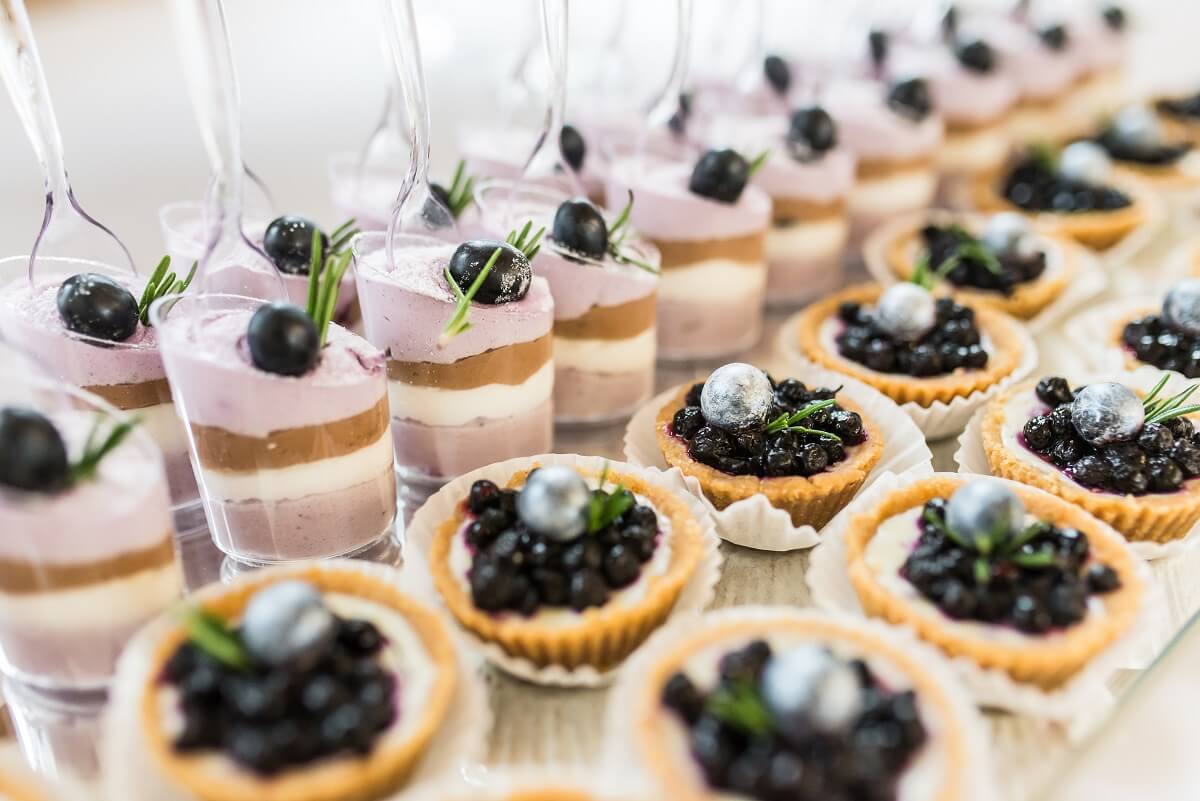
Drinks
An essential element to counting catering quantities per person is that any meal has drinks available every hour. As a rule of thumb, each person will have 1-2 drinks in the first hour of the event and then one drink every hour thereafter. Have a variety of drinks, including kid-friendly, non-alcoholic, and alcoholic beverages like wine or beer.
How Do You Calculate Food Per Person? – The Final Note
You now have all the basic knowledge to plan the perfect meal for your guests. Always remember to round up your estimates instead of down; it is always better to play it on the safe side and have a bit too much food than not enough.
Keep in contact with your client so you can work through mishaps and changes before the event takes place to make calculating food portions as accurate as possible. Remember to adjust your menu and portion sizes to such factors as the budget, timing, dietary requirements, the number of guests and other important factors.
Also, keep in mind that it’s not only significant how much food you’ll need but also how it’ll be served. Browse the products available in our online shop to find elegant disposable cups, glasses, trays, jars, etc., that will be perfect for serving food and drinks at a wedding, corporate lunch, or any other party.
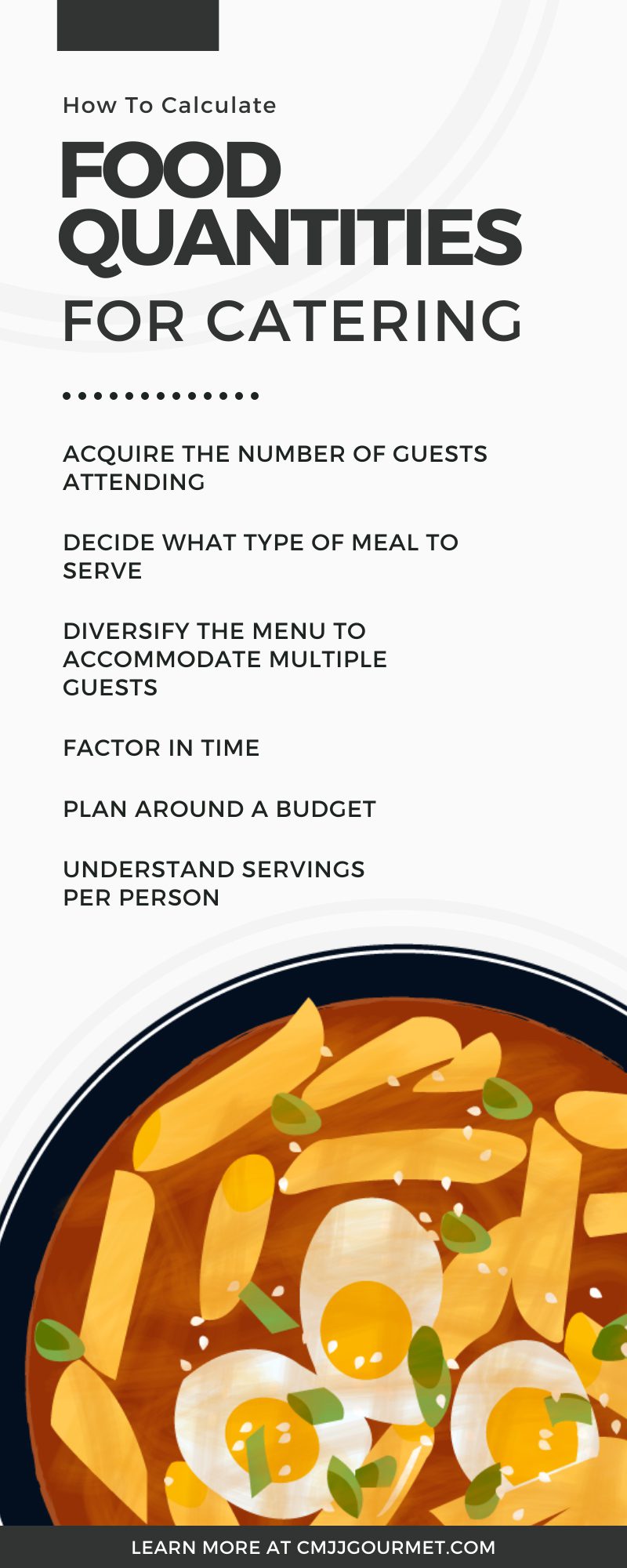
Other Articles
Dessert Menu for Wedding
Key Takeaways Dessert is a memorable highlight of weddings, offering a chance…
Catered Lunch Ideas
Key Takeaways Offering a range of customizable meal options caters to different…
Healthy Catering Options
In a world where convenience often trumps nutrition, finding healthy food catering…
Appetizer Catering for Weddings
A wedding celebration is a symphony of love, and every note must…
Chicken Dishes for Catering
Chicken is always a great choice for catering events and parties. It’s…
Family Reunion Food Ideas
It’s hard to imagine a family reunion without lots of delicious food,…
Cold Buffet Ideas
Hot foods are great for parties, but they have one significant disadvantage…
Catering for Picnics: Ideas, Hints and Tips
Picnics blend the simple joy of outdoor dining with the delight of…
How To Tell if a Container Is Microwave Safe
An important question, indeed. Not every container we buy, receive, or use…

